Surviving Humanity, as Alberto Giuliani stated, ‘tells a story’ more than it requests interpretation. The artist travelled around the world to photograph places where efforts to safeguard human survival are underway.
Each of these science-based attempts are interesting in their own right. As presented and annotated by Giuliani, the story, guided by the probing question of his four-year-old son — “How will the world be when I’m big?” — makes me wonder too.
Entering the Allen Lambert Galleria at Brookfield Place, sunlight penetrates and illuminates the exhibition through the beautifully designed Santiago Calatrava structure. Ambient music weaves quietly through the cavernous space.
Installation view of Alberto Giuliani, Surviving Humanity. Photo: Andrew Colebeck
However, this is not a cathedral, rather we are in a massive real estate development in a centre of the Canadian commercial banking world. It is easy to be awestruck at the juxtaposition of financial wealth and a photography exhibit about species’ survival.
The juxtaposition of subject matter and exhibition location was made clear in the image of the world’s most luxurious survivalist bunker complex. The first ‘sold out’ silo of 15 apartments hosts 75 people. The expanding complex is described as being outfitted with a shopping mall and dog park. As a real estate development, if interested, it is located in the geographic centre of the United States, Kansas, home to Dorothy and Toto. As a pet owner, it seemed thoughtful to me, that the developers considered bringing the family dog along to the bunker.
I had a feeling we weren’t in Kansas anymore.
Installation view with Alberto Giuliani, Survival Condo, Kansas, USA, 2017 (dog park). Photo: Andrew Colebeck
In high school, we were fortunate to be encouraged to engage in current affairs debates in our World Issues class. The issue of the day happened to be South Africa just before the end of apartheid. Way, way, way back before our current efforts at social justice, truth and reconciliation, inclusion and readjustment — evidenced by the overall Contact 2022 exhibition selections — I remember one classmate, on the subject of apartheid, stating “It could never happen here”. Obviously, it did. South Africa took Canada’s model of managing indigenous peoples and effectively yoked a majority of them for almost 100 years.
A second survival option, a little further north in South Dakota, where presumably the weather is harsher, is the worlds largest bunker community. Buried underground are 572 bunkers able to support 5000 people. Memberships were still available in 2017, notes Giuliani.
Installation view with Alberto Giuliani, Vivos XPoint, South Dakota, USA, 2017. Photo: Andrew Colebeck
I’m not sure why I was reminded of this high school memory but I appreciate the message in the context of CONTACT 2022. This year’s festival is exceptional for the preponderance of photography exhibitions forcing public conversations, hopefully forward.
We were kids… our social media consisted of connecting at the corner Friday after school to see where the weekend party would be. Back then we didn’t know any better.
But if your condition is grim, survival might include being frozen cryogenically.
Alberto Giuliani, Alcor Life Extension Foundation in Scottsdale, Arizona, USA, 2017. Courtesy of the artist
Some of the seed specimens being collected and stored for humanity’s survival, via protecting biodiversity, can be found in the tundra in Norway, at the Global Seed Vault in Longyearbyen, Svalbard. With a capacity to store 4.5 million seed samples, and buried 150 metres underground, the design was supposed to be foolproof. Melting permafrost has caused floods recently.
Alberto Giuliani, Global Seed Vault, Longyearbyen, Svalbard, Norway. 2017. Courtesy of the artist
A visit to this exhibition is highly recommended. Other subjects include rare images of the China National GeneBank near Shenzhen, the Mauna Loa, Hawaii lava flows used by NASA and others for simulated training of astronauts preparing to visit Mars, and the geodesic structures built to preserve threatened vegetative species.
Alberto Giuliani, Eden Project, Cornwall, UK, 2017. Courtesy of the artist
A fitting conclusion to the Surviving Humanity exhibition and project is the stark photograph Giuliani took standing alone on a deserted street in Pesaro, Italy where he resides. It was day one of the Italian lockdown due to the COVID-19 pandemic. Pesaro, Italy was particularly hard hit in the early stages of the pandemic.
Alberto Giuliani, Pesaro, Italy, March 10, 2020, first day of lockdown. Courtesy of the artist
But back to my high school memory… it could never happen here. Yet, here is where we are.
Andrew Colebeck
Featured image: Alberto Giuliani, Survival Condo, Kansas, USA, 2017, detail.
*Exhibition information: Alberto Giuliani, Surviving Humanity, May 1 – 31, 2022, Brookfield Place, Allan Lambert Galleria, 181 Bay Street, Toronto. Hours: Mon – Fri, 9am – 6pm. The exhibition is part of Scotiabank Contact Photography Festival 2022.

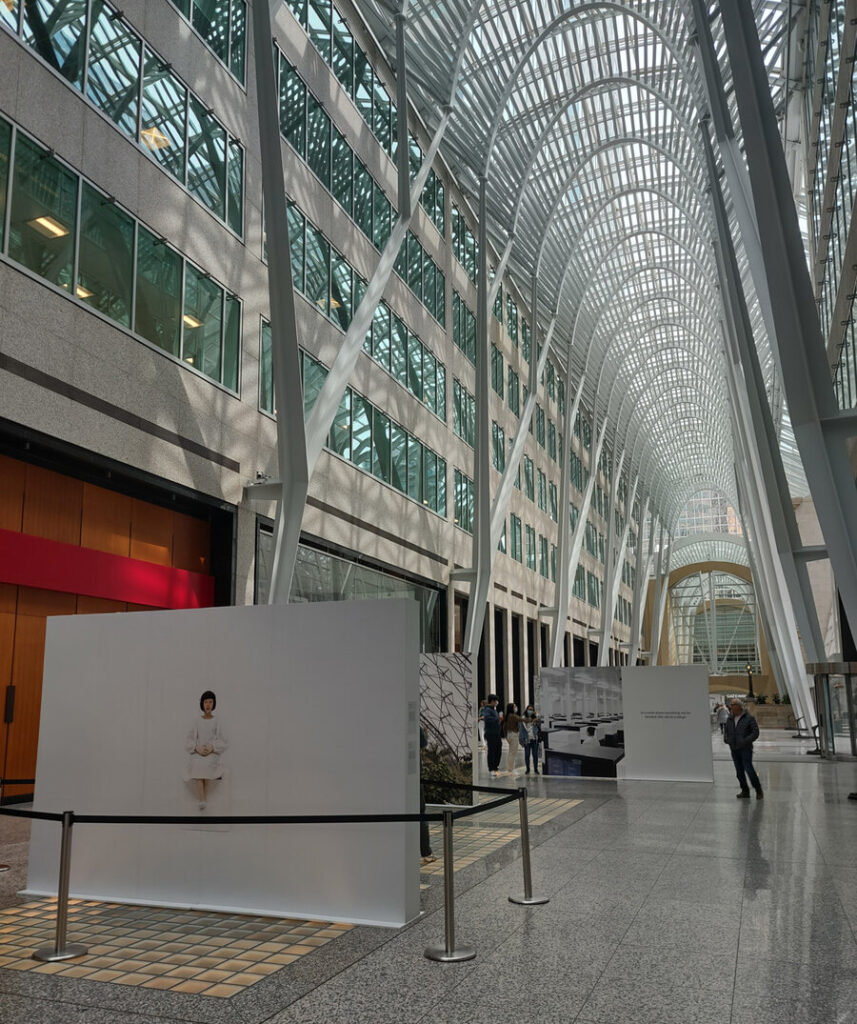
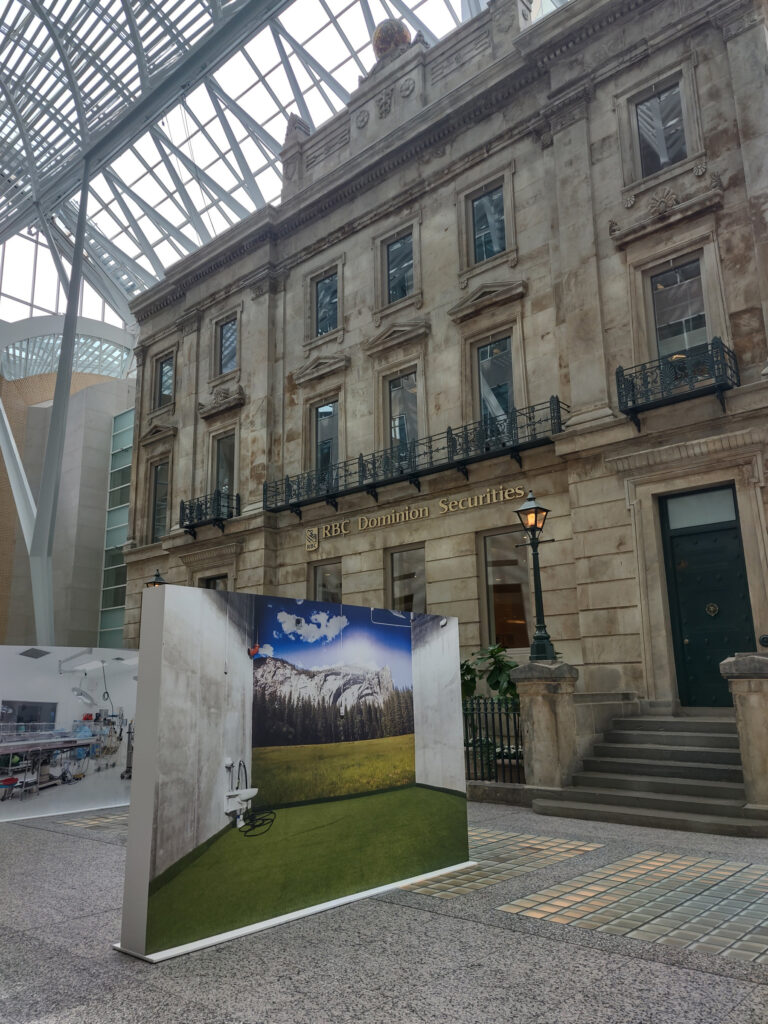
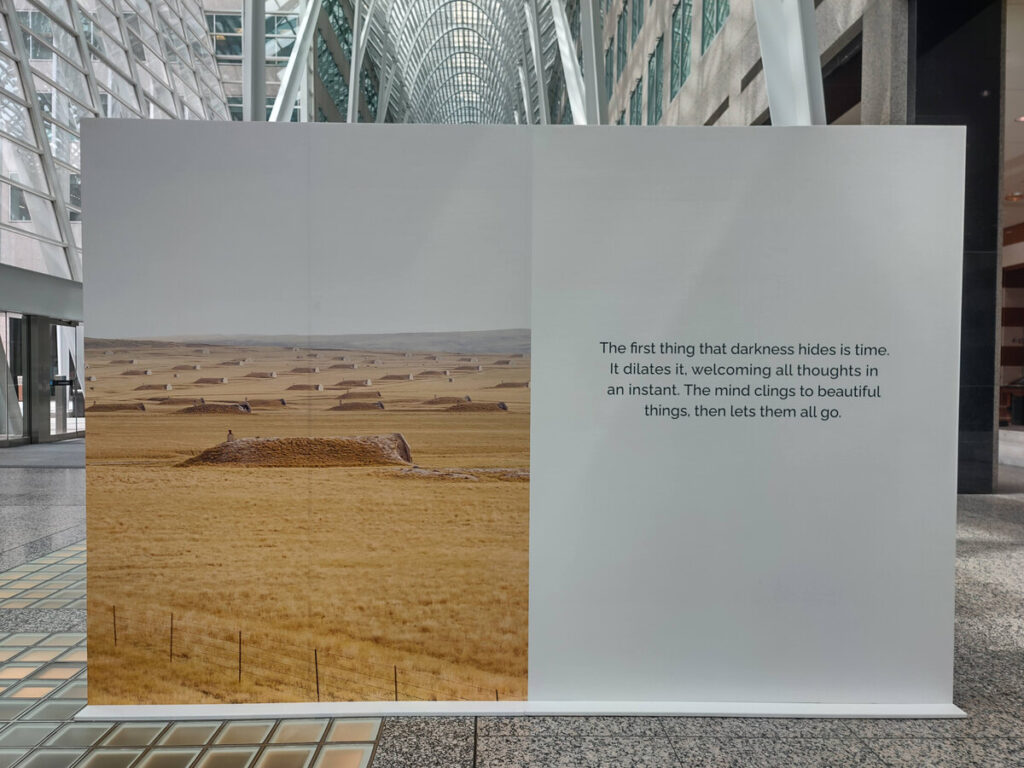
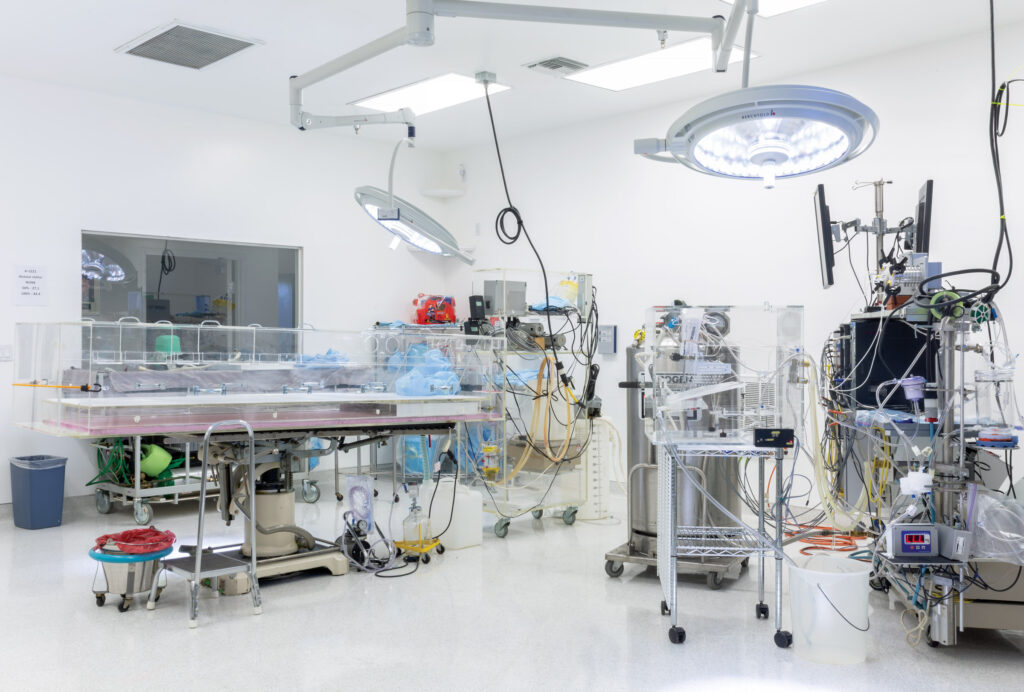
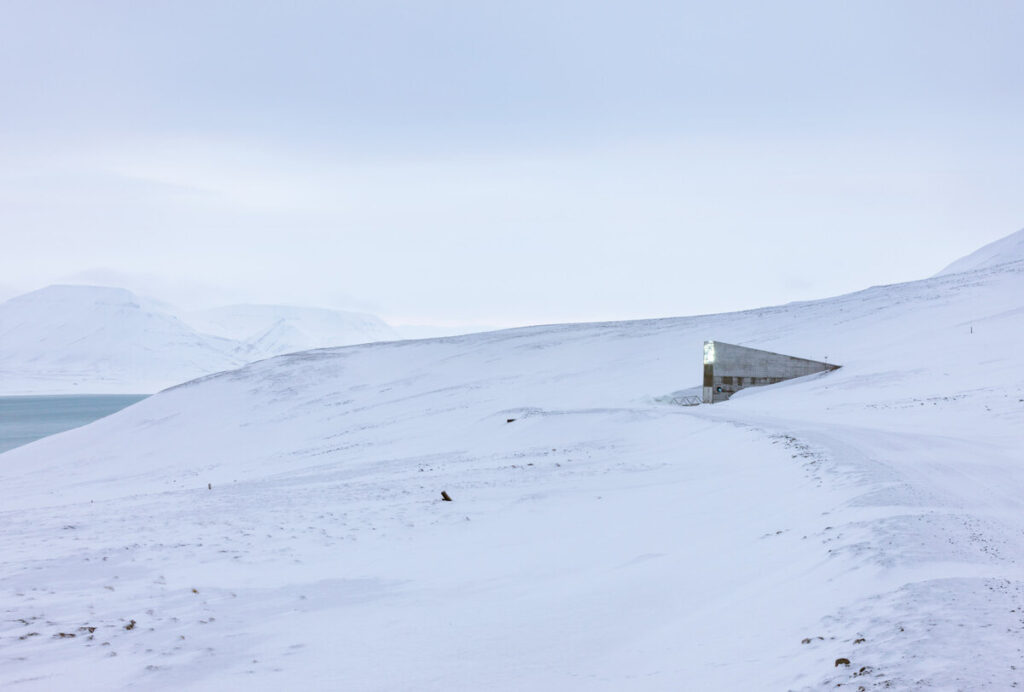
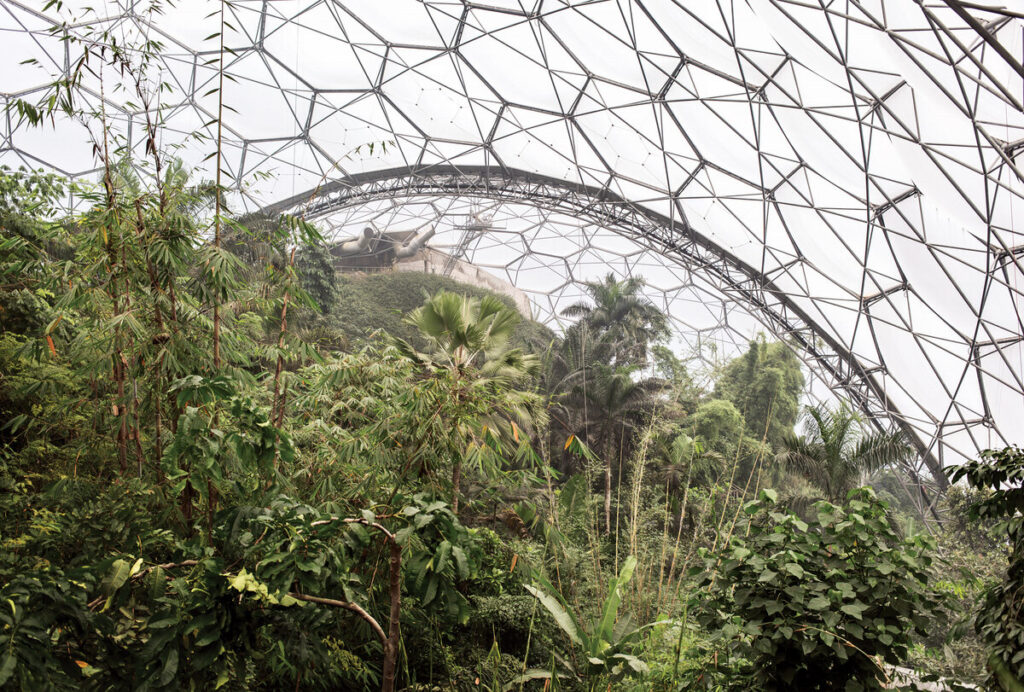
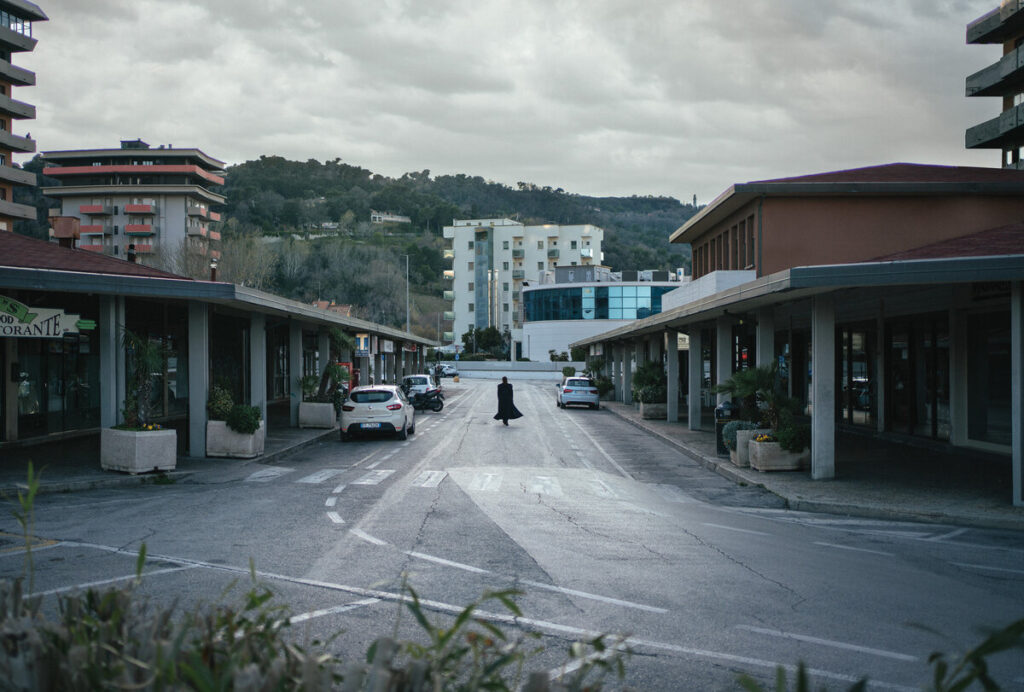
Andrew, thank you for the words with which you told my work and above all for sharing your thoughts. The greatest satisfaction that a job can give is that we end up talking about the world, about life.
Thank you so much, Alberto Giuliani